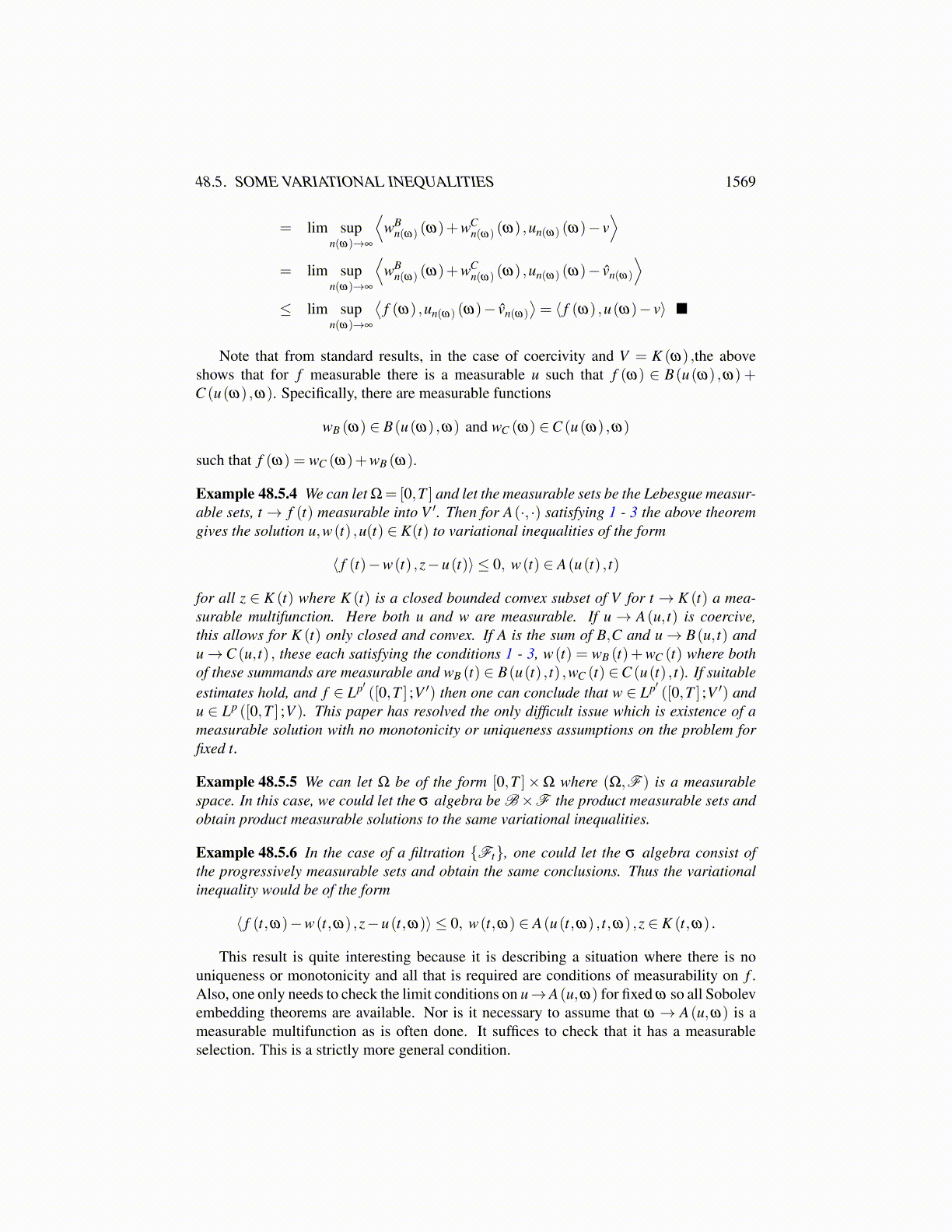
48.5. SOME VARIATIONAL INEQUALITIES 1569
where {vk}∞
k=1 is dense in V . Also let
γn (ω) = max{∥d1 (ω)∥ , · · · ,∥dn (ω)∥ ,∥v1∥ , · · · ,∥vn∥}
and Bn (ω) defined as B(0,γn (ω)). Then let
Kn (ω) =Vn∩K (ω)∩Bn (ω) ̸= /0 so ∪n Kn (ω) dense in K (ω)
Now each Kn (ω) is a set valued compact convex subset of Vn (ω) which is a measurablemultifunction. It is a measurable multifunction because the linear combinations of the mea-surable functions {v1, · · · ,vn,d1 (ω) , · · · ,dn (ω)} having a subset of the rational numbersas coefficients is a dense subset of Kn (ω). Then by Theorem 48.3.3, there exist measurablefunctions
un (ω) ∈ Kn (ω) ,wBn (ω) ∈ B(un (ω) ,ω) ,wC
n (ω) ∈C (un (ω) ,ω)
such that ⟨f (ω)−
(wB
n (ω)+wCn (ω)
),z−un (ω)
⟩≤ 0 (*)
for all z ∈ Kn (ω).Thus for all w ∈ Kn (ω) ,⟨
wBn (ω)+wC
n (ω) ,un (ω)−w⟩≤ ⟨ f (ω) ,un (ω)−w⟩ .
These un (ω) are bounded because K (ω) is a bounded set or in the other case, one can pickthe special z(ω) in the definition for coercivity to obtain that these un (ω) are bounded.Thus, since A(·,ω) is assumed to be bounded for A = B,C, each of un (ω), wB
n (ω) ,wCn (ω)
are bounded for each ω .By Lemma 48.2.2, there is a subsequence n(ω) such that(
un(ω) (ω) ,wBn(ω) (ω) ,wC
n(ω) (ω))
converges weakly to (u(ω) ,wB (ω) ,wC (ω)) in V ×V ′×V ′ and
ω → (u(ω) ,wB (ω) ,wC (ω))
is measurable into V ×V ′×V ′. It is now only a matter of verifying the desired variationalinequality for each ω .
By convexity, u(ω) ∈ K (ω). Now for fixed ω, let ûn(ω)→ u(ω) strongly in V whereûn(ω) ∈ Kn (ω). Then
lim supn(ω)→∞
⟨wB
n(ω) (ω)+wCn(ω) (ω) ,un(ω) (ω)−u(ω)
⟩= lim sup
n(ω)→∞
⟨wB
n(ω) (ω)+wCn(ω) (ω) ,un(ω) (ω)− ûn(ω)
⟩≤ lim sup
n(ω)→∞
⟨f (ω) ,un(ω) (ω)− ûn(ω)
⟩≤ 0.